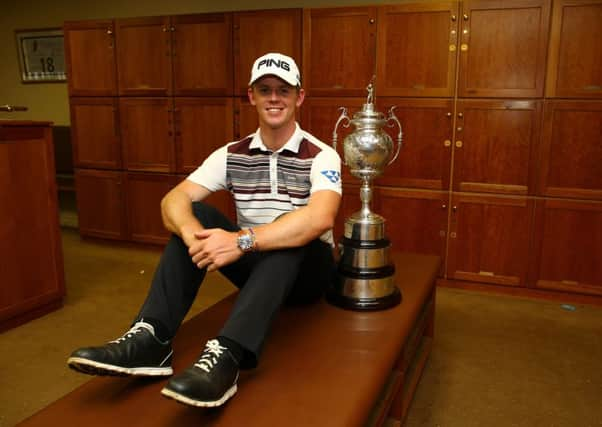Martin Dempster: Rainbow Nation has found pot of gold pathway


Soutar’s triumph over Stone at Mowbray Golf Club saw the Leven Golfing Society man crowned as the 2012 South African Amateur champion while a one-hole victory for Crichton, from Aberdour, the same year helped Scotland win a Test match at Leopard Creek.
Those respective successes will have become even sweeter, no doubt, after Stone won his home Open at the age of just 22 on Sunday, but they also highlighted the contrast in Scotland’s poor transition rate from amateur to professional compared to South Africa.
Advertisement
Hide AdAdvertisement
Hide AdTrue, Stone has long been tipped to make his presence felt in the paid ranks, having racked up 18 national titles and earned the Golf Digest Amateur of the Year ranking before taking up a golf scholarship alongside a certain Jordan Spieth at the University of Texas in June 2012.
He then used the Challenge Tour to find his feet as a professional, finishing 80th on the second-tier circuit in his first full season in 2014, before climbing to 14th (sandwiched between Scottish pair Andrew McArthur and Jamie McLeary on the money list) last year to earn a seat at the top table in European golf.
However, the false picture that can often be created in one-off match-play ties has definitely been illustrated by those respective victories for Soutar and Crichton, with neither having been able to come close to matching Stone’s subsequent progress.
In a move that he should be applauded for after refusing to be starry-eyed due to the fact he knew his limitations, Soutar decided to give up playing as a full-time amateur the following season so that he could have the security of a guaranteed salary at the end of each month.
Crichton, meanwhile, has played on the third-tier PGA EuroPro Tour for the last two seasons with limited success and could well be about to fall back on the cell and molecular biology degree he secured during a spell at Western New Mexico University.
In fairness, Crichton isn’t alone from that 2012 Leopard Trophy match to find the switch to professional golf is unforgiving. Only Paul Shields, preparing for his first season on the Challenge Tour, has made any real headway from a team which also included Fraser McKenna, Danny Kay, Connor O’Neil and James White.
Which is why our current crop of leading amateurs, led by Grant Forrest, Jack McDonald, Ewen Ferguson and Connor Syme, should all be trying to pick the brains of their South African rivals, not just trying to beat them in a series of events during a Scottish Golf trip to the Rainbow Nation in the coming few weeks.
As highlighted in this column back in November, South Africa seems to have a system that is working, a point Richie Ramsay picked up on as he reacted to Stone’s brilliant breakthrough success on Twitter. “Lots of talk how SA keep producing so many good young players,” wrote the three-time European Tour winner on the social media site. “All confident, great pro pathway, game suits Tour golf, mentors.” He later admitted that better weather is another factor that the South Africans have in their favour.
Advertisement
Hide AdAdvertisement
Hide AdAn excellent mentoring system, of course, is now in place in Scotland, though Paul Lawrie believes it is down to the players themselves to find that inner belief and strength to achieve career goals. “I have always believed that, if you are good enough, you will find a way,” the former Open champion told Global Golf Post. “There’s a bit of debate about not enough players coming through. There’s been people shouting about not enough support and not enough facilities, but I’m not sure that’s necessarily the case. That sounds like an excuse.
“I was a 5-handicapper when I turned pro on 1 April, 1986. I was not much good, but I hit balls every day and, with the help of Doug Smart (the head pro at Banchory), I was able to make it. I don’t like to slag the young players too much, but I’m not sure they are as good as their handicaps suggest, and I think that might be misleading them a bit. They certainly wouldn’t be plus-5 or plus-6 on the courses we play on Tour.
“I was in the TV lounge at Deeside a few weeks ago and some of the boys asked me what I thought my handicap would be if I was a member there. They laughed when I said plus-7 or plus-8, but I meant it because on a good day I would come down 0.6 but on a bad day I’d only go up 0.1. I think that shows there’s a big gap between the top pros and the top amateurs and that’s something everyone has to recognise.”